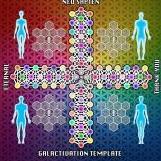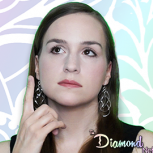Search the Community
Showing results for 'bliss'.
Found 6,722 results
-
I feel like I’m motivated for other things which takes up most of my day..I think the problem is I haven’t found any sort of higher quality “release” or “play” type of activity I can easily do everyday that has no goals attached to it and is purely for the bliss of doing it, allows me to stay in a higher consciousness level..maybe I’ve just been using lower consciousness releases (mainstream media) but now am looking for better options. I have a project I’ve been working on in alignment with my life purpose but a lot of the work I’m doing rn for it is mundane gritty type of work.
-

Preetom replied to SoonHei's topic in Spirituality, Consciousness, Awakening, Mysticism, Meditation, God
@who chit It should be clear that Nisargadatta Maharaj never identified himself with the I AM. He clearly states that this I AM arises 'spontaneously' on the Absolute. So he, as the Absolute, does not control or exert volition on whether this I AM should arise or not. He remains absolutely unconcerned because he knows perfectly well that this I AM is an illusion and can never taint him a bit. And also nothing can be said about Para-brahman 'state'. It is beyond bliss, union etc whatever you try to impose on it. Nagarjuna's 8 negations of Absolute come here. It is called a state because the lack of a better term. Maybe the only thing you can say about Para-Brahman is that it is! It is the only real thing that is. Even that statement falls short to describe it. It's really futile to philosophize about it. -

SOUL replied to Basegodmike's topic in Spirituality, Consciousness, Awakening, Mysticism, Meditation, God
Luckily there is no overdosing on bliss... -
I love to just be, pure be-ing. Doing is a distraction from this pure being, doing is a distraction from resting in infinite consciousness. My awareness goes into a contemplative and a meditative mode without any effort when I don't do anything at all. To just be is beautiful. Concentration and doing is a distraction from the truth and the love I feel when I let the spontaneous contemplation just happens, as it always does when resting in pure being with nothing else to do. My dad on the other hand loves doing, i don't think he has anything going on in his inner being other then the satisfaction over something he does in the outer world. The arrangement of the outer world, like working, cleaning, house keeping, pay bills, wash the cars etcetera, gives him satisfaction. He view me as lazy and I view him as a closed minded person with no access to divine consciousness. I would like him to have the taste of Godly awareness, but that will never happens. Anyway, it's tricky with my dad, but other people who are "doers" that I don't know personally, those people I love, they don't bother me(because they don't know me, hence they don't know we are different) and I love the sounds of people working, the discussions they have, the sound of construction working in action. But I love it only when I'm not part of it my self. I like to blissfully witness it all from a distance, with a cup of coffee in my hand and love in my heart. Those "working-bees" do so much things for me, they build my house, they build my car, they construct all the roads I love to travel. They transport and manufacture all the delicious foods and goods to my local store for me to pick whatever I like. I can't help but feeling some trace guilt in the middle of all the bliss. I obviously like to consume the fruits of society, but clearly, I don't contribute anything myself(I'm lucky regarding economy). The only thing I provide for others are an open mind, kindness, happiness, but no real goods, nothing tangible. Aren't those working-bees right about us to some degree, we are somewhat lazy, we don't help the wheels of society to spin that much, do we? After all, teaching non duality which many of us realised do, has no value for those who can't pick it up, which are most people, nor do they desire it. Only like 0.02% of people both desire AND are able to pick it up and transform themselves from the non duality teachings. And there are by far enough teachers out there to supply the non dual teaching demands from those tiny 0.02 % who wants it. You see what I'm saying here? Elaborate.
-
Jeez I'm infinitely happy!! It's over overwhelming sometimes, I'm so empty and so fucking full at the same time . ? Let's all drown in loving awareness.
-
I decided to sit down, get clear and write everything out. Working as my own business has got me all over the place (I recently made this leap). I love the freedom but it's also challenging because I must spend my time wisely, be good at managing myself and be a professional. Here's my new daily routine that incorporates everything. I'm going to use this as a default template of how my day should run. 4:00 - 6:00 AM Fitness 6:00 - 8:00 AM Accomplishment Project 8:00 AM - 2:00 PM Income Main Source *If I am going out, Get Ready 2:00 - 4:00 PM Income 3rd long-term source 4:00 PM - 8:00 PM Income 2nd source or Bliss project Right now I have 3 sources of income named by most to least (immediately) important. The 3rd source is a more long-term strategy. Each one of them is considered part-time and again I plan to stick to this schedule 7 days a week. I also have a project I called the "Accomplishment Project" which is driven by my need for accomplishment and my love for learning. The "Bliss Project" is my life-purpose project.
-

SOUL replied to Faceless's topic in Spirituality, Consciousness, Awakening, Mysticism, Meditation, God
@Ingit I understand, we all have things pop up in our mind from our subconscious, face them or don't face them it doesn't really matter which but sure they feel hella real and hurt. That's your state of being right now and it's rough, I get it but it doesn't have to always be that way. The ego self will have seemingly endless energy in keeping us in that distressed state suffering but don't give it the attachment, like don't agree this is 'me' and 'mine'. Just observe without identifying and keep doing it. Sure, we have to do stuff in life to keep living but on the inside, stay observer mode. It may take days or months or years, I don't know, everyone is different it took me years but eventually the ego self will quiet up, lose it's energy and intensity then fade away like smoke. Some might be able to shut ego self down instantaneously but that wasn't my experience, it echoed for some time. Being at peace or joy, fulfilled, happiness, bliss, glee lol whatever you call it will happen if you allow it. It took me awhile but now it be present. Or don't, go ahead, feed the ego self and suffer forever. I can't be it for you, you got to be it for it to be. -

Solace replied to Your place at Heart's topic in Spirituality, Consciousness, Awakening, Mysticism, Meditation, God
Do you feel live while listening to this? Do you feel more connected? More joy, happiness, oneness, and bliss? Use direct experience always. -

Arkandeus replied to LaraGreenbridge's topic in Spirituality, Consciousness, Awakening, Mysticism, Meditation, God
dear friend, we must keep our eyes to the stars and dreams, it serves no one to investigate what's unpleasant, our instinct is joyful expansion! yes life is easy,it needs no justification for that, the nature of life is bliss, that's a good thing really, I keep my visor on what I desire, peace, harmony, joy to that I dedicate all of myself, every single cell and every liter of imagination which is why I cannot partake in your exercise growth can only come in my opinion with acceptance of what is, then growth is revealed to be our true nature, infinity, we do not grow because we lack something, we grow out of abundance -

Arkandeus replied to LaraGreenbridge's topic in Spirituality, Consciousness, Awakening, Mysticism, Meditation, God
it's this weird ego thing where people put a certain figure into positions of divinity then strip them and deny them of their sexuality, in order to dehumanize them and make them match the godly portrait "oh you be damned for not holding upto the divine standards onto which I hold you to!I'm a victim of your folly!" its just plain dehumanizing it clearly shows that ego always causes suffering, whether its when you put someone below yourself, or when you put someone to be better then yourself, it is always ugly all this stems from the very deep belief in spiritual community that you cannot be enlightened AND have fun sex representing the fun aspect, is sex not one of the highest in life? "you cannot have pleasure And enlightenment in the same life" "you cannot be the wise man or wise woman and have your wild sexual escapades and motorbikes and make-up, spa's and parties" well I raise you infinity I'll be damned if I'll end up as some castrated monk sitting all day in "bliss", no offense to the monks I'll have the heavenly wisdom, and I'll have the earthly pleasures, two for one, that will be my bliss, and I hope the same for everyone enlightenment is fun, it is not hard work, it is not serious work, it can be both if desired tho, its all for us to chose, I'll go for fun though, that is my view on it -
Since the beginning of the year I have been experiencing some kind of shift of consciousness or at least that’s the term I can produce now. It propably started a bit earlier when I cleaned up my diet, started to consume supplements to decalcify my pineal gland (I had a theory that it would help my migraines). Anyway, then I started to watch a lot of videos about food, TED talks, psychology and I stumbled upon Leo. Then I started my meditation and after the first try I had a weird experience (I wrote about it here on the forum) and in fact it progressed I had my body vibrating in a strange way and then the energy (I suspect kundalini) was filling me up (I don’t think it is fully awake, there was no spectacular bliss or anything like this), I was feeling so big, like I had no boarders, but I had also troubles sleeping, brain fog, bit of nausea and I stopped with watching videos and meditation. I had a backlash and went back to my more regular life. Less Leo more Netflix Now it is back again, I am in my maniac stage and am watching his videos like crazy, the energy has taken over, is not as intense as after the vibration episode but quite constant. It got interesting after the shamanic Breathwork I tried, more intense. Now, my question is what I should do, persevere in meditation etc. or rather calm it down and integrate like the last time? What will happen if I continue? I have a family and job... My family does not know a thing and they would not understand. I am stage yellow mostly. Any advice?
-

AstralProjection posted a topic in Spirituality, Consciousness, Awakening, Mysticism, Meditation, God
OK so I've been using 4-ACO-DMT and 2C-B separately for quite a while. Both are good psychedelics, but oh man I was in for a surprise when I mixed the two. OK so I take both of them as it's been a while since I had a good trip. I take them and put on these two songs bellow. I get tried when I take 4-aco-dmt. So I take 15 mg of 4-aco-dmt, and 10 mg of 2-cb. I close my eyes and relax into being. I am melting into the couch. I became one with the music. And my mind was morphing a little. But most of all I felt love like I never felt before. I touched sublime bliss. It was very profound. Any negative thoughts were just washed away with love. My consciousness increased too to encompass a pretty big space. I experienced time dilation. The heart of the trip was only for about 3 hours, but it felt like 6 hours. It was so powerful that I was mesmerized coming down and talking about it with my family. Whiteout & One Half Bear - The Part In-Between (RNM) tyDi feat. Brianna Holan - Never Go Back (Tom Fall Remix) -

Emerald replied to Emerald's topic in Spirituality, Consciousness, Awakening, Mysticism, Meditation, God
Unfortunately, this is the exact spiritual bypassing that I was talking about. If a lion is running at you, just repeat these ideas and all the danger will melt away into spiritual bliss... OR you'll be mauled by a lion for not being properly aware of the goings-on within duality. Either way, it doesn't matter because "All is one." You never cared about your life because you're aware that death is an illusion. So, whenever you're being mauled, you will not feel any sense of terror or suffering. You're beyond that... right? Truth is not opinions or ideas. And if you are not abiding in Truth, then you will certainly be effected by negative life circumstances. The best thing that you can do now is be really honest with where you are, and stop deceiving yourself that you're so detached from outcomes. Anyone can repeat these ideas and believe in these ideas. But when the rubber meets the road, you will immediately become aware that these ideas don't keep you safe from harm and that you're not above pain and suffering. Ask yourself, have you ever experienced ego transcendence. If the answer is no, you don't know anything about it. Or truly, even if you have, you are not abiding in that state now. So, duality is likely very real to you. -
The remembering of homeostasis is a meditation in and of it's self. Your bad day today is the consequence of your good day a week ago and visa versa. This is probably why Shinzen Young says that strong determination sitting is the quickest way to enlightenment, if you voluntarily put yourself through that level of hellish suffering it's only natural to emerge on the other side in a state of bliss. Furthermore many consider enlightenment to be "the final disappointment" you do all that work, go through all that suffering, just to realize there's nothing to realize "that was kinda dumb" as Jed would put it. But then you get the reward of flowing through life without the heavy burden of all your thought stories. Remember homeostasis.
-

RabbitHole replied to 11modal11's topic in Spirituality, Consciousness, Awakening, Mysticism, Meditation, God
Exactly, everyones ego in beggining gets like: "I want this, tell me more, I want to reach that enlightement, Ooh happiness, I wan't that too". And then It gets kicked in the balls as It had delusionary understanding of what It actually means to go this route. Then break is needed and until we can continue where we left, only this time - slowly and patiently. It's impossible to unsee all that has been seen and the drive to go deeper will stay, just need to realize that It's all not just beautiful fairytales and that ego is not going to receive infinite intelligence, constant pure bliss and superior state. I honestly believe that ego is what drives 95% of people on this route. -

11modal11 replied to 11modal11's topic in Spirituality, Consciousness, Awakening, Mysticism, Meditation, God
@Mikael89 I'm not sure if I reached "absolute or what" not but I got far, wayyyy too far. If say leaving your body is the limit, I've been right there multiple times and had to stop what I was doing because I could feel like I was being lifted out of my crown area and could possibly die if I kept going. After a couple years of meditation for 2 hours per day (I was doing it for the high when I started). Then I started noticing weird stuff happening to me like I'd think something and it would happen, or I ran around all day living in the moment, and at certain points I felt overwhelming pleasure and that if I didn't stop I would leave my body. Life became very synchronistic and I'd be thinking something, then say a song with that exact phrase would play on my computer or someone would call me with free tickets to something I had been thinking about. Or even I would have say an imagination of something, and I'd literally see that thing in a move at the theatre later that day. I did my research and found out about high vibrations and such which I assume was at the cause. Then I wanted to see how far I could make things go in my favor so I did more research did Bentinho's courses for months and I was changing so fast that I couldn't keep track of reality and I actually made a couple objects change places by "intent" and even my phone a couple times would start typing things I was thinking (I swear to god i saved pictures) and some other weird "paranormal" things. I still had a sense of self at this point. I kept pushing too far though and then I stumbled upon Actualized, but Leo's take was very "no self". I kind of felt socially pressured because of all the memes on this site being so anti-self and kill your individuality (my fault of course, but I was so deep that i kind of didn't have a real barrier any more) and more merged with reality like he said in his "god mode" and physicality started changing into this like "field" as I say, but the joy and bliss from before where I was focusing on vibration and perceived myself more as a "spiritual being" instead of "everything" disappeared, because I felt bad for having a sense of self, like I wasn't;t supposed to at this level or something and I just kind of felt scared, confused took on a very cynical approach to reality because of how was all such an "illusion" as Leo says. I would say Leo actually had very good pointers to reach this kind of space and really see it more and more "purely" I guess, but for me the depression of trying to "kill myself" and "become infinite" when I enjoyed and appreciated life so much really made me in a weird spot and nihilistic, like I wasn't;t free to just be what i wanted to and do what i wanted to do, which is more how I lived before.ANd reality seems so groundless now, that iI am working to become more "human" again. I want to warn people that I don't believe it is natural for everyone, not for me at least. I was way happier as an individual for sure, and honestly in my experience, there are more than one "truth" I do feel that there is inherent metaphysical individuality that is ignored in many of spiritual teachings, ultimately we are one at the absolute level, but in my expernience there are layers of individuality in between avg joe and monk and my comfort level definitely lies in individuality. As for getting to this kind of place if you really want to merge with everything, Leos teaching is very harsh, but it will get you there, and he reallyy wanted to be there with no shortcut, I'll give him that. The part about "god-mode really changed it for me to reach greater depths (again in which I am very uncomfortable). -
Be very careful going down this road. use this as a tale of warning. before i came across actualized.org my life used to be so meaningful, and i was the happiest and most optimistic person i knew. i used to enjoy every moment of life in bliss appreciating the wonder of all of the variety. now i literally perceive reality as this vibrating field of oscillation where everything’s is the essentially same just the surface appearance is different and there is no separation and its just this same fucking field and im all of it and just fucking here always this vibrating field. this is literally what i perceive with my senses. it is miserable, all meaning i had and appreciation i had is gone because i see the sameness underlying all of this and my inseperation from it. not to mention in alll leos videos he says, kill yourself, die, kill your ego. so i did that, now at this point why even live? i feel like there is no point to existing anymore. this is enlightenment? this is torture, someone please help me here. I am trying to reprogram my mind to get back to when i perceived myself as an individual that was happy and had meaning in life and was unique and had things that i liked myself instead of this vibrating field that i now am with no real people just these perceptions that are an illusion as i can see "them" being materialized by this field by my very perception. theses nothing special or meaningfull anymore its all this same field just oscillating away everywhere "i" "go". this site is the worst thing to ever happen to me. Please if someone has some techniques to reprogram me to have a separate identity again please let me know. For anyone else going down this road be very wary. maybe this is for some who can't cope with life being a person, but if youre just "curious" like i was and then socially pressured by Leo and this board thinking this is something you have to do and that literally being a person is bad, which i had to struggle with until i was no longer one what i perceived as "my life" was over . this may not be for you. I really want to forwarn anyone following this path that the end may not be what you think it is. imagine reality disintegrating before you , everything you hold as important and meaningful or special to you gone, your own identity as a person gone. in order to even have a conversation with this field you are manifesting as perceptions you perceive as people you have to attempt to fake to the mind that there are other people even when you know its all clearly one thing going on and a persistent illusion. life is now a constant "fake out" to do anything when you know how everything is this generic field here moving around and can literally see this now more than anything. So again I truly warn you that this may not be for you. And if someone has any suggestions to regain an identity and somehow forget that this is an illusion it is much appreciated, any hypnosis or something would be excellent. be careful what path you take before understanding the consequences of your life literally being over to see this.
-
The answer is simple. You must find something that fulfils you more than playing videos games does. Think of something exciting or relaxing you could do when the craving arises. For me, that was meditation. It takes me to a place of unconditional love, overwhelming love; and the desire to use something external no longer arises because I have found love, the end to all desires. All desires are an attempt to use something external to feel more love. Once you can plug into the source of love directly, you will find that your life will naturally change into one of joy, bliss, and addiction free.
-

Solace replied to NoSelfSelf's topic in Spirituality, Consciousness, Awakening, Mysticism, Meditation, God
@Outer I heard that as well. But he was in a state of total bliss for that period, and there was no desire to do anything arising in him but to just be. And when desire arose he got up and left. This is surrender. Something almost alien to my own mind. -

emind replied to emind's topic in Spirituality, Consciousness, Awakening, Mysticism, Meditation, God
@zunnyman Exactly! I was surprised as well that Leo would suggest that, trying psychedellics is one of the things which I am most interested in, but also one of the things I fear the most. I havent tried Yoga yet but Leo's recommended book is shipping to me atm so I will probably start in the next few weeks. Is the type of Yoga you recommended in it? I feel like meditation and presence can provide you with so much bliss and so many beautiful moments, but the bad ones make me reconsider it. Although, in the end, I tend to think that the suffering that comes along with having a strong ego (or any ego at all) outweighs any potential difficulties I might have in my spiritual journey. I guess, what I mean is, do I really have a choice? I could not live with myself knowing that there is an ultimate spiritual truth out there to be found by embarking on a lifelong journey, and that I am hesitating to follow it. I just couldnt. -

zunnyman replied to emind's topic in Spirituality, Consciousness, Awakening, Mysticism, Meditation, God
@emind Oh man, I feel every word you said. I just had a mini depersonalization episode just now after I thought the worst was over months ago. I know Leo is saying to do psychedelics but honestly, if meditation scares me I don’t know how I would do psychedelics. My current game plan is just doing meditation, experiencing those bliss moments, and other stuff, and when I feel the depersonalization coming, I just run from it again and again. I don’t know whats to come in the near or late future though. I feel pretty demotivated too on this path, because this shit can fuck with you. My next hope is to look into sadhguru’s programs as he says they give a very solid foundation for enlightenment work. Currently, Upa yoga is helping with immediate healing if you want to try that. I have a feeling, not sure, but doing strong practices (like paying attention to the breath or mindfulness meditation with labeling) can be too much for the ego sometimes -
When I read threads here I see a few members that are truly great, they seem to know everything and have an aura of enlightenment about them. However, it still feels like they are refusing to make the very last step to finally become fully enlightened, like they hold something back. Like they are 99% enlightened and not aim any higher that that. At very rare occasions though, I see members who are all in so to speak, 100% , I often notice when facing those posts already after reading the first sentence. I can't nail what's special about them, they just are. They just feel so incredible transparent, honest and full of integrity. I feel their words digs in to my body and deliver silence and truth. What I notice about these posters is that they are not interesting in socialising or sharing ideas back and forth, they often just post one single post and that's it, then they are gone for good. In a way, all of those "One post wonder"- members had a dark picture of life. But it didn't felt dark at all reading them, rather it felt liberating to read them. A few of them decided to commit suicide, others have chosen to stay but they know there is nothing to gain in doing so. They just let the lucid dream continue, but for no reason really. The reason why I don't feel sad reading those dark posts is because I recognise how they desire REAL enlightenment in a way. And if you want REAL enlightenment, you can't really desire any aspect of worldly life, not even "enlightenment" within a body mind, and that explain the dark nature of their posts(which paradoxically aren't dark at all). They were not satisfied to reach a point were they saw through duality. They wanted more(same as less), they were not satisfied with a lucid dream within an agent lost in maya, they wanted FULL awakening. And think about it, first you don't recognise reality as a dream, you believe it is real, then you recognise it's nothing but a dream(maya). You're having a lucid dream by now, but that's not really to be fully awake. If you have a dream at night, and start realising you're in the middle of a dream, you might find it fascinating to be in a lucid dream for a while, but after that initial bliss and freedom of realising you're in a lucid dream, don't you want to quit the game all together, folding up to ten and become fully awake? I can't see how you can stay within a body mind and be fully enlightened, even if you don't identify at all with the body mind that carries you around. Can you? Also, at my most blissful in moments in life, when I really enjoy life the most, thoughts like "Nothing could be better then to be physical dead" have come to my mind. Those thoughts only come when I really experience great happiness in life, I think that is because the supreme creator know that I can handle the truth at that time. Those kind of thoughts never come me, when life isn't that good, then I think of a new car, a new carrier, a new girlfriend or anything other superficial. Elaborate.
-
I have had periods in which Ive been really deep into meditation and self inquiry, and have experienced partial moments of bliss (not anywhere close to enlightenment). But I have also had two depersonalization episodes, which were horrendous to say the least. Lately Ive been a little lazy with my spiritual work, and while asking myself why I had been lagging so much, I realized that it is sheer fearfulness. After experiencing a dark form of quasi-enlightenment (depersonalization episode) or whatever you want to call it, and feeling an emptiness in which nothing could ground me, and coming back from that experience (thankfully), the thing I was most grateful for was the fact that I had an ego with which I could navigate the world. I am literally clinging to my ego with all my strength, because the experience I had when losing it (or almost losing it) was absolute hell. Now with that said, there is another side of me that does crave the pursuit of true spiritual liberation, something very unlike the dark episodes I went through. I do want to start Yoga and restart meditation and self inquiry. How should I proceed with this?
-

BuddhaTree replied to Aaron p's topic in Spirituality, Consciousness, Awakening, Mysticism, Meditation, God
Freedom from suffering, and discovering unbroken peace and bliss and the secrets of the universe. What else do you want? -
@pluto Thank you!! It really came out of nowhere, and I felt a deep resonance with it, like It described everything I want to express, be and share I hope you are doing well too, I've been finding lots of joy in my breathe, and starting to do more exercise much more (yoga, stretching, hiking). Lots of love and light, oneness and bliss your way brother.





.thumb.png.72e21133f484d30ad027f29a2e67f772.png)